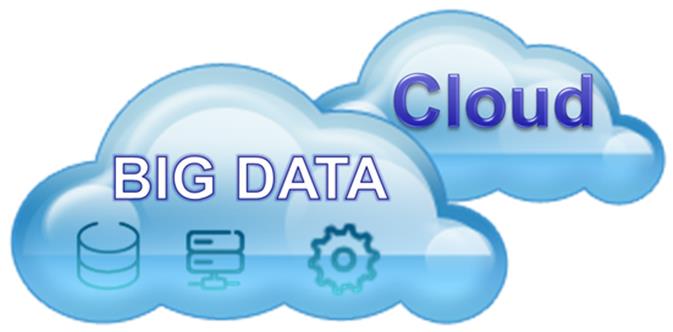Big Data Cloud: Improve Data Management and Analytics
By Alex Carter on October 7, 2024
Cloud technology is frequently used to store, process, and analyze large datasets. Many businesses find that cloud-based solutions outperform traditional on-premises systems for managing massive amounts of data. This approach aids in cost reduction, managing rising data volumes, and adapting resources as necessary.
As data volumes grow, corporations employ cloud platforms to handle information from many sources and do real-time analysis. Key features include how cloud technology helps big data operations, the problems that businesses experience during installation, and the critical criteria to consider for successful deployment.
How Cloud Technology Enhances Big Data Management and Analytics
Big data in the cloud refers to using cloud-based services for storing and analyzing large volumes of data. As businesses recognize the cloud’s advantages, many rely on it to manage growing datasets and extract valuable insights. In 2023, global spending on cloud services reached $270 billion, marking a $45 billion increase compared to 2022.
Multiple factors push businesses toward cloud-based big data solutions, aside from rapid data growth and high on-premises maintenance costs.:
- The requirement to handle data from many sources, including financial transactions, CRM systems, Internet of Things devices, and more;
- Scalability to manage unpredictable changes in data volume;
- Demand for real-time insights to maintain a competitive edge;
- Increased adoption of remote work models.
The following five aspects explain why cloud platforms are highly effective for big data operations:
- Storage: Cloud platforms use distributed file systems to provide scalable storage that supports a variety of data formats without regard to space;
- Processing: One of the primary advantages of cloud-based big data processing is speed. Hadoop and Spark are tools that allow data to be processed simultaneously across various systems, resulting in speedier results;
- Integration: APIs built into cloud platforms make it easy to link them to internal and external data sources. Many services are already pre-integrated, greatly simplifying the procedure;
- Analytics: Cloud platforms frequently incorporate machine learning and artificial intelligence capabilities. Businesses may use tools like Amazon SageMaker and Google Cloud’s Vertex AI to build, train, and deploy models that detect trends and provide insights;
- Security: Despite concerns about data security, leading cloud providers implement strong precautions. These include robust encryption, stringent access limits, and frequent security assessments that are constantly upgraded.
To learn more about improving protection measures using large datasets, read about big data security analytics in cloud-based systems.

Key Architectures for Cloud-Based Data Platforms
Cloud computing for big data offers several architecture models, each designed to meet specific business needs, data volumes, and processing requirements. Below are the most common approaches used in cloud-based data platforms:
Centralized Architecture
This architecture stores and processes all data in a single area, making management easier and ensuring data integrity. It usually results in cheaper initial setup expenses and simpler oversight. However, as data quantities increase, scalability becomes an issue.
Users who are remote from the central system may encounter delays, and the architecture runs the danger of a single point of failure.
Decentralized Architecture
Data is distributed across multiple nodes and locations, allowing for horizontal scaling by adding more machines. This improves speed for users across regions and increases fault tolerance.
However, decentralized systems are more difficult to govern and pose additional issues in preserving data consistency. Setup costs are usually higher compared to centralized systems.
Hybrid Architecture
Combining centralized and decentralized elements, hybrid architecture often uses a central data warehouse for structured data and distributed data lakes for unstructured information. The warehouse stores critical data requiring fast access and strict management, while the distributed lakes handle tasks like machine learning projects and experimental analytics.
Serverless Architecture
This approach relies on cloud provider-managed infrastructure, reducing the need for operational management. It uses a pay-per-use basis and grows dynamically based on demand. While serverless solutions save money and human labor, they provide no control over infrastructure and may increase the danger of vendor lock-in.
ETL (Extract, Transform, Load) processes form the critical backbone of modern data ecosystems, enabling organizations to harness scattered information sources and convert them into actionable intelligence. While traditional ETL workflows once required extensive manual coding and maintenance, today’s cloud-native solutions automatically handle the heavy lifting of data integration with dramatically reduced engineering overhead.
Event-Driven Architecture
Designed for real-time responsiveness, this model processes data based on specific events. It activates only when triggered, making resource usage efficient. However, event-driven systems are more complex to design and troubleshoot.
In many cases, hybrid and serverless architectures are the most practical options. Hybrid models offer flexibility by combining centralized and decentralized features, while serverless systems provide managed services with cost-efficient scaling and integrated tools.
Key Advantages of Cloud-Based Big Data Solutions
The global big data market is expanding quickly. According to MarketsandMarkets, it is projected to reach $273.4 billion by 2026, with an annual growth rate of 11% between 2021 and 2026. A large portion of this growth is driven by rising data quantities and the broad adoption of cloud-based big data solutions. By 2025, more than half of IT investment is predicted to migrate from traditional infrastructure to public cloud services, up from 41% in 2022.
This way of accessing, maintaining, and analyzing big information in the cloud is known as Big Data as a Service. The following are the primary advantages that organizations get from merging big data and cloud computing into a single solution:
Cost Efficiency
Cloud-based big data services are pay-as-you-go, which reduces the expenses involved with building and operating on-premises equipment. Organizations only pay for the resources they use, which results in demonstrable savings when systems are correctly set up. Companies that shift workloads to AWS claim cost reductions of up to 31%, with AWS offering tools for ongoing cost evaluations.
Cloud providers handle infrastructure maintenance, including:
- Hardware and software updates;
- Network operations;
- Power supply;
- Physical security.
This lowers the need for businesses to manage these tasks on their own. In addition, platforms like Hadoop process large amounts of unstructured data efficiently, helping avoid the ongoing scaling costs often seen with traditional SQL-based systems.
Scalability and Elasticity
Cloud platforms support automatic scaling based on workload needs. Resources can be increased or reduced to meet performance requirements without extra costs. This is useful for applications with seasonal or event-based traffic spikes, such as e-commerce sites or streaming services.
Elasticity also helps data analysts and scientists access historical data without interruptions, allowing them to run complex analytics efficiently.
Contextual Reporting and Decision Support
Cloud-based big data analytics enables real-time reporting tailored to individual users, roles, or departments. Unlike traditional BI dashboards, cloud solutions use technologies like as natural language processing, machine learning, real-time anomaly detection, and augmented analytics to provide more relevant insights.
Combining big data and cloud computing improves decision-making by enabling access to data-driven insights via improved decision support tools.
Cloud and Big Data integration has rapidly evolved from a technical novelty to an absolute business imperative, with organizations that successfully merge these technologies gaining unprecedented analytical capabilities and market agility. The massive scalability of cloud infrastructure eliminates the traditional hardware constraints that once limited big data initiatives, allowing companies to process petabytes of information without massive upfront capital investments.
Improved Business Continuity and Disaster Recovery
Setting up reliable and fault-tolerant systems on-premises is expensive and complicated. Cloud providers simplify this by offering built-in redundancy and disaster recovery. Data is automatically stored in multiple data centers across different locations, ensuring access even during hardware failures or natural disasters.
Microsoft Azure, for example, saves numerous copies of data in different places to prevent loss. When combined with containerization tools like Kubernetes, these solutions enable quick recovery and reduce downtime. Cloud providers also maintain strong cybersecurity safeguards, providing protection levels that are sometimes impossible to match with in-house systems. Additional consultation services are provided to improve security even further.
Simplified Data Aggregation from Multiple Sources
Cloud platforms simplify the integration of data from diverse sources, including IoT devices, sensor networks, remote databases, and web applications. This capability supports high-performance parallel processing and efficient data pipeline management.
Rolls-Royce uses Microsoft Azure to collect and handle worldwide data on fuel usage, air traffic control, and engine performance. Azure IoT Suite collects the data, which Cortana Intelligence Suite processes to produce actionable insights for engine management.
AI and Machine Learning Integration
Cloud-based big data platforms commonly offer AI and ML services, which enable enterprises to improve their analytical skills. Amazon Personalize, for example, provides dynamic, tailored consumer suggestions.
Spotify is another example, having partnered with Google Cloud since 2016. The firm uses Google’s AI technologies to improve content suggestions and block hazardous content, illustrating how AI integration affects user experience.
Despite these benefits, developing and implementing cloud-based big data systems requires meticulous preparation. A systematic strategy is required to overcome possible obstacles and maximize the benefits of these technologies.

Common Challenges Businesses Face When Adopting Cloud-Based Data Solutions
Adopting cloud-based data solutions brings several challenges that businesses must carefully address. According to Flexera’s 2024 State of the Cloud Report, the biggest obstacle cited by 54% of respondents is understanding application dependencies. This is followed by difficulties in comparing on-premises and cloud costs (46%) and concerns about technical feasibility. Below is an overview of these key challenges, along with other common issues faced during cloud migration:
Understanding Application Dependencies
Businesses often operate complex IT systems developed over many years. Identifying how systems and applications interact can be difficult, and overlooking even a minor dependency may disrupt operations.
Create a complete inventory of all software systems and their connections. Use automated mapping tools and involve stakeholders from different departments to ensure a full understanding of interdependencies.
Assessing On-Premises vs. Cloud Costs
Estimating cloud expenses is challenging due to complex pricing models and varying service options. Indirect on-premises costs — such as electricity, physical space, and hardware maintenance — also make cost comparisons difficult. Additionally, fluctuating data workloads may cause unexpected expenses during high-demand periods.
Conduct a thorough analysis of your present IT spending, including hardware, software, maintenance, and staffing expenses. Use cloud cost calculators from service providers to estimate costs and prepare for long-term scalability.
Technical Feasibility
Legacy systems sometimes rely on specialized hardware or obsolete programming languages, making cloud conversion difficult or, in some situations, impossible without adjustments. Custom-built apps may provide significant issues.
Evaluate each system’s compatibility with cloud infrastructure. Run performance tests, security audits, and consider modernization where needed. Cloud migration services can assist in addressing technical obstacles.
Loss of Data Control
Managing large cloud-based data systems may reduce direct control over data security. Human error, lack of automation, and incomplete monitoring increase the risk of data breaches or leaks.
Create rigorous cloud usage regulations, install security upgrades on a regular basis, and increase monitoring using automation tools. MLOps services can also enhance data protection and maintain confidentiality in cloud systems.
Dependence on Third-Party Providers
Although cloud services are typically stable, interruptions can disrupt access to key applications and data. Businesses must plan for service disruptions.
Implement monitoring tools and create detailed risk management plans. Consider a multi-cloud strategy to minimize the impact of potential provider outages.
Network Limitations and Connectivity Risks
Relying heavily on cloud infrastructure increases dependence on stable Internet connections. Network failures can temporarily block access to cloud-based data and services.
Maintain backup internet connections through alternative providers. Identify important components that may stay on-premises and develop backup strategies to solve any connection concerns.
How to Deploy Cloud-Based Big Data Solutions Effectively
Define Goals and Plan for Long-Term Needs
Before beginning deployment, clearly outline your goals for migrating large data activities to the cloud. Consider not only your urgent demands but also your long-term goals to avoid costly rework later. Switching cloud platforms after deployment may be complex and expensive, particularly when dealing with huge datasets. Early planning allows for the selection of the best platform and services to support future expansion.
Evaluate Existing Data Infrastructure
Examine your present data systems to determine what information you have, where it is housed, and how it is utilized. Databases, spreadsheets, data from Internet of Things devices, and even non-digitized materials fall under this category.
A thorough study reveals which workloads are acceptable for cloud transfer, which require improvement, and which should be kept on-premises. Cloud readiness evaluations can give useful insights and assistance along the process.
Choose the Right Cloud Provider
Cloud providers offer different services for data storage, processing, and analytics. Select a provider that fits your industry-specific needs and data requirements. Major providers like AWS, Azure, and Google Cloud offer reliable but often more expensive options. Budget-friendly alternatives, such as Hetzner or DigitalCloud, may be suitable for less critical workloads, though they may come with trade-offs in stability.
A multi-cloud strategy is another option — placing essential systems on more robust providers while using cost-effective solutions for non-critical tasks. This approach addresses performance, security, and cost requirements.
Start with Smaller Workloads and Expand Gradually
Begin the migration process with smaller, less critical datasets or applications. This phased approach allows teams to gain experience with cloud systems and adjust workflows as needed. Gradually expanding cloud deployment also helps staff develop the necessary skills to manage cloud-based big data systems effectively.
Work with a Technology Partner
Collaborating with a technology partner or cloud optimization service can help maximize the value of cloud investments. A qualified partner can recommend auto-scaling solutions, adjust cloud architecture, and suggest cloud-native or third-party services to improve performance and reduce costs. Their expertise ensures that resources are used efficiently and that the cloud setup supports both current and future business needs.
Conclusion
Cloud-based big data solutions offer businesses a practical way to manage large datasets, reduce costs, and improve scalability. With the right architecture and careful planning, companies can benefit from flexible storage, faster processing, and advanced analytics. However, successful implementation requires addressing common challenges such as application dependencies, cost estimation, and data security. Following best practices, including setting clear goals, evaluating infrastructure, selecting suitable providers, and starting with smaller workloads, helps ensure an efficient and reliable cloud deployment.
Posted in blog, Web Applications
Alex Carter
Alex Carter is a cybersecurity enthusiast and tech writer with a passion for online privacy, website performance, and digital security. With years of experience in web monitoring and threat prevention, Alex simplifies complex topics to help businesses and developers safeguard their online presence. When not exploring the latest in cybersecurity, Alex enjoys testing new tech tools and sharing insights on best practices for a secure web.
